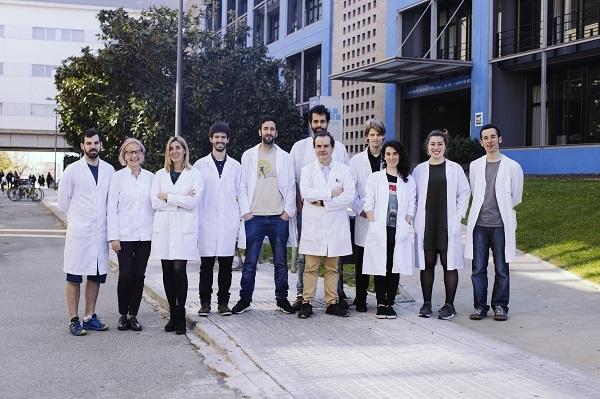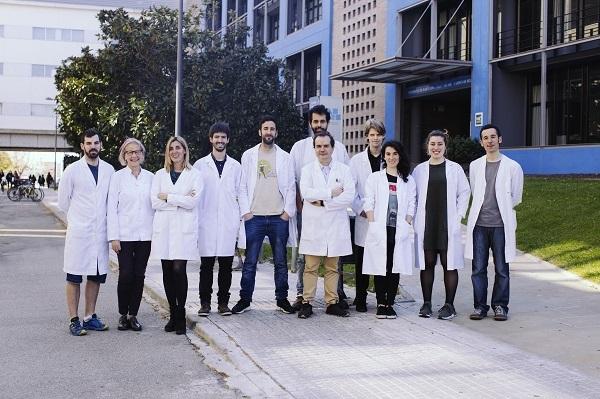
Credit: UB
A team of the Institute of Neurosciences of the University of Barcelona has participated in the design of the first light-activated drug -the JF-NP-26, for the treatment of pain, according to a research with animal models published in the journal eLife. The new study is conducted by the teams led by Professor Francisco Ciruela, from the Faculty of Medicine and Health Sciences of the University of Barcelona, the Institute of Neurosciences of the UB and the Bellvitge Biomedical Research Institute (IDIBELL), and Amadeu Llebaria, from the MCS group of the Institute of Advanced Chemistry of Catalonia (IQAC-CSIC).
Optopharmacology: light-operated drugs
In general, common pharmacology has important limitations -slow and inexact distribution of the drug, lack of spatiotemporal traits in the organism, difficulties in the dose adjustments, etc.- which can limit the therapeutic action of any drug. In this context, optopharmacology is an emerging discipline in pharmacology, based on the use of light to control drug activity. Therefore, using light on a photosensitive drug, the pharmacological process can be controlled with spatial and temporal precision.
The new study published on the journal eLife has come up with the design of a "photo-drug" (JF-NP-26) with powerful therapeutic applications to treat pain, a molecule that can be specifically activated at any wished moment (that is, with a high spatiotemporal resolution) with light.
"In the clinical field, there is not any precedent of the uses of optopharmacology to improve pain treatment or any disease associated with the nervous system. This is the first light-activated drug designed for the treatment of pain in vivo with animal models", says Professor Francisco Ciruela.
Designing a toxic effect-free photosensitive compound
In this new optopharmacology proposal, a drug with a known action mechanism (for example an analgesic) is chemically modified to make it photosensitive and inactive. This drug is activated when receiving light -using an optical fiber- of a suitable wave length and with an exact precision on the target tissue (brain, skin, articulations, etc.).
The drug JF-NP-26 is also called photocaged, a chemically and inactive covered molecule which is activated with light. Compared to other photosensitive compounds, JF-NP-26 is a molecule that has no pharmacological effect on an animal until the target tissue received light from a visible spectrum (405 nm wave length). Moreover, JF-NP-26 does not show toxic or unwanted effects even if the dose is high -in short-length studies on animals.
The drug's lightening includes a treatment on the molecule that releases the active molecule (raseglurant) that blocks the metabotropic glutamate type 5 (mGlu5) receptor, found in lots of neuronal functions such as the spread of neuronal pain. Blocking this receptor allows preventing the pain from spreading into the brain. This can be produced both due the outlying neurons and the central nervous system (brain) and create, in both cases, an analgesic effect as a result.
An analgesic effect which was not quite described so far
"The molecule created by the action of the light, the raseglurant, does not belong to any group of drugs from the classic anti-pain list of drugs: non-steroidal anti-inflammatory drugs or NSAID (paracetamol, ibuprofen, etc.) and opioids (morphine, phentanyl). Consequently, this study describes an analgesic mechanism which has not been explored enough so far" says Ciruela.
"Actually, -adds Ciruela-, the raseglurant was examined in clinical trials as an analgesic to treat migraine but it was ruled out due its hepatoxicity. This new optopharmacology of the raseglurant can stop adverse effects in the liver and opens a new path to start using it as an analgesic".
Searching for new drugs using optopharmacology
Optopharmacology is shaping a new horizon in the findings of new drugs and administration and control methods for pharmacological action. This discipline can help widening the therapeutic range to treat pain and notably reduce the unwanted effects of lots of drugs (for example the high risk of addiction in morphine, the NSAID low analgesic efficacy in severe and chronic pain, etc.).
"If we compare natural biological molecules that act in living beings with drugs, we can see that the former can work with great precision, acting in centralized areas and with regulated doses, with defined lengths. However, the drugs we have, act in all areas and without a strict control. The use of light-controlled molecules tries to complete these spaces to get more precise drugs that can act like biological molecules" says Llebaria. The team of the Group MCS (Medicinal Chemistry & Synthesis) of IQAC is now participating in several projects on photo-pharmacology, working on the design and synthesis of several light-activated molecules. "This approach is more complex than the one on a conventional drug since, apart from the therapeutic features, the molecule's photochemical and photophysical responses have to be prioritized" says Llebaria.
The research team of the UB and IDIBELL is working on research lines in optopharmacology to respond to lots problems related to conventional pharmacology. "At this moment we are examining other molecules with different action mechanisms but also based on G protein-coupled membrane receptors, the biggest therapeutic target at the moment. Therefore, we have drugs under study for the treatment of Parkinson's disease or psoriasis. We are also exploring the optopharmacological use of light with different wave lengths (green, yellow and red) which are even less toxic. Regarding the future, we cannot rule out some symptomatology to be lowered with optical fibers in the brain, just like electrodes are put in the deep brain stimulation with Parkinson's disease" concludes Ciruela.
Apart from the groups of UB-IDIBELL and CSIC, other participants are researchers from the Institut Química de Sarrià (Sarrià Chemical Institute, IQS), the Universitat Autònoma de Barcelona (UAB), the Institute for Functional Genomics (IGF) from the University of Montpellier (France) and the Sapienza University of Rome and Neuromed Institute (Italy). "The need to encourage research groups from different fields of science to collaborate is important to explore new paths in order to understand the biological complexity and unfold all the potential to create extreme new technologies for the improvement of human health" say the researchers who led the project.
###
Media Contact
Gemma Fornons
[email protected]
34-638-685-074
@idibell_en





